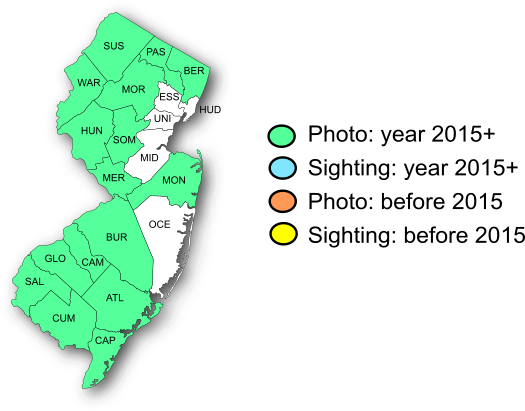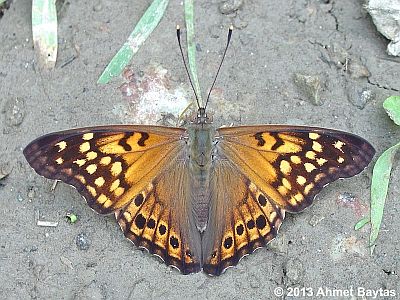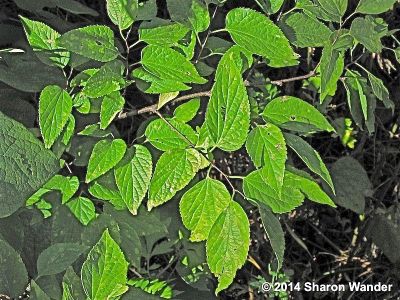New Jersey Butterfly Club
A chapter of the North American Butterfly Association (NABA)
Tawny Emperor
Asterocampa clyton
Identification: Medium size, about 2". Above: FW fairly bright tawny-orange, with pale spotting on variably dark wingtip but no eyespots. Two crooked but unbroken bars extend in from leading edge. HW variably tawny to dark grayish-brown, with black submarginal spots. Below: FW brownish with pale spotting and two narrow dark bands basally. Lacks eyespots of Hackberry Emperor. HW ranges from dull brownish-gray to boldly marked with dark-brown basal and submarginal areas separated by a pale postmedian band; both versions have a submarginal band of inconspicuous, blue-centered eyespots.
NJ Status and Distribution: Resident. Generally less common throughout than Hackberry Emperor. Rarely nectars but will come to overripe fruit or “butterfly brew.”

Habitat: Deciduous-forest edges and openings with the host plant. Like Hackberry, most often seen on bare ground and on roads, including paved roads. Fond of dung and carrion. Often lands on tree trunks when flushed from ground.
Flight Period: Two broods, the first from early June to mid-July, followed by a very small emergence from August to October. Extreme dates: North Jersey 6/7—9/27; South Jersey 5/5—10/11.
Caterpillar Food Plants: Common Hackberry (Celtis occidentalis).
Overwintering Stage: Caterpillar.
Good Locations: Delaware Water Gap NRA (near the river), Appalachian Trail Lands, Kittatinny Valley SP, White Lake, Horseshoe Bend Park, Riverwinds Scenic Trail. (Most South Jersey reports are from private gardens.).
Comments: If a butterfly lands on your house or place of work in June and July there is a good chance that is one of the emperors. Most years we are alerted to the first emergence of adults by one landing on the windows of our home office! If you plant hackberries, they will come.



